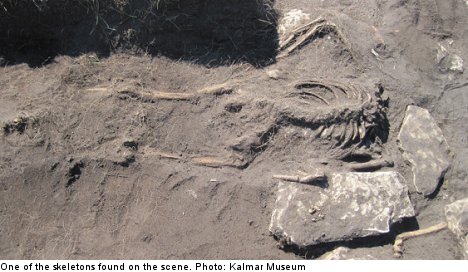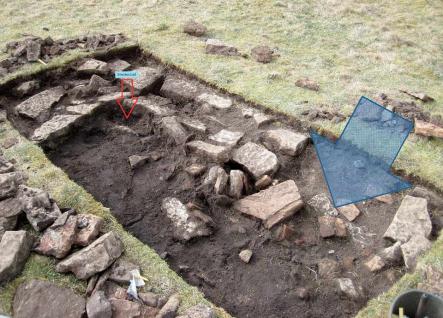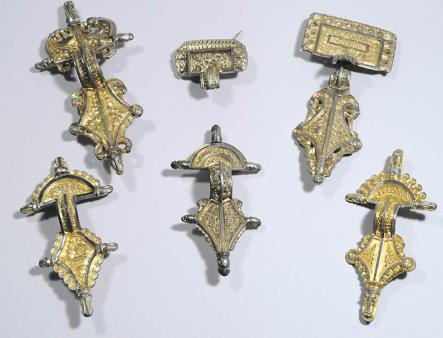Archaeologists who unearthed five ancient and brutally-murdered bodies last week on a Swedish island say they’ve discovered an inexplicable massacre, with one expert expecting to find hundreds more bodies in a scene she compared to Italy’s Pompeii.
The Local
October 19, 2013
“We have a massacre and everyone is still there,” archaeologist and project manager Helena Victor told The Local.
A small team of archaeologists at Kalmar County museum, in collobaration with Lund University, has been digging at the site for the past three years. The team is studying the Migration Period in Scandinavian history, from about 400 to 550 A.D., 400 years before the Viking Age.
The custom of the time was to burn the dead, and so archaeologists were shocked when they unearthed intact remains from 1,600 years ago at the otherwise peaceful Sandby Borg fort.
“In the way they’ve been killed it’s clear it’s not a domestic fight,” Victor said. “These people were just in their houses. Slaughtered in their houses.”
Öland, an island just off the south east coast of Sweden, is a popular destination for Swedes soaking up summer sun, as well as the location of the Swedish royal family‘s summer palace. But it seems the island has a violent past. Five bodies were discovered in one hut alone last week, and as the dig continues the numbers keep climbing.
“We have just opened very small trenches, about one percent of the site, and already found ten people in different places,” Victor told The Local. “I’m expecting a couple of hundred.”
“We have a massacre and everyone is still there,” archaeologist and project manager Helena Victor told The Local.
A small team of archaeologists at Kalmar County museum, in collobaration with Lund University, has been digging at the site for the past three years. The team is studying the Migration Period in Scandinavian history, from about 400 to 550 A.D., 400 years before the Viking Age.
The custom of the time was to burn the dead, and so archaeologists were shocked when they unearthed intact remains from 1,600 years ago at the otherwise peaceful Sandby Borg fort.
“In the way they’ve been killed it’s clear it’s not a domestic fight,” Victor said. “These people were just in their houses. Slaughtered in their houses.”
Öland, an island just off the south east coast of Sweden, is a popular destination for Swedes soaking up summer sun, as well as the location of the Swedish royal family‘s summer palace. But it seems the island has a violent past. Five bodies were discovered in one hut alone last week, and as the dig continues the numbers keep climbing.
“We have just opened very small trenches, about one percent of the site, and already found ten people in different places,” Victor told The Local. “I’m expecting a couple of hundred.”
The archaeologists uncovered the feet of the first body last year and decided to follow the trail. When the skeleton was uncovered they discovered its skull had been split, apparently by a sword, and Victor said the person had “obviously been killed”. The next skeleton was found lying flat on its stomach, also with brutal damage.
“I think they were ambushed in some way and people were running into the house trying to kill them,” said Helene Wilhelmson, a Lund PhD student who specializes in the study of bones. “And they didn’t have a chance.”
None of the archaeologists were expecting a murder mystery at work. The excavation began in 2010 when researchers discovered jewellery boxes and gilded brooches at the site, along with dozens of valuable pearls. Such baubles from the fallen Roman Empire and the Byzantine kingdom have been found on Öland and Gotland before, and the team was hoping to discover more about Öland’s role in trade of the period.
But the vast caches of jewellery were untouched, leading researchers to believe the violent raid had nothing to do with wealth – and the attackers may even have been known to the victims. But whoever they were, they didn’t leave any hints.
“We have no trace of the attackers,” Victor told The Local. “We’re not sure if they attacked during the day or night or how it came to be. We don’t know if they came by water or land. We don’t know if they were Swedes or Finns or Danes or anything else. That’s the big question.”
The crime scene remained untouched for over one thousand years, transforming the fort into a gruesome graveyard.
“It was such a terrible massacre that it totally destroyed the fort,” Wilhelmson said. “I don’t think anyone dared to go near it for a very long time.”
Whatever the reason, the site has been remarkably well-preserved, giving archaeologists a rare, detailed glimpse into the past.





